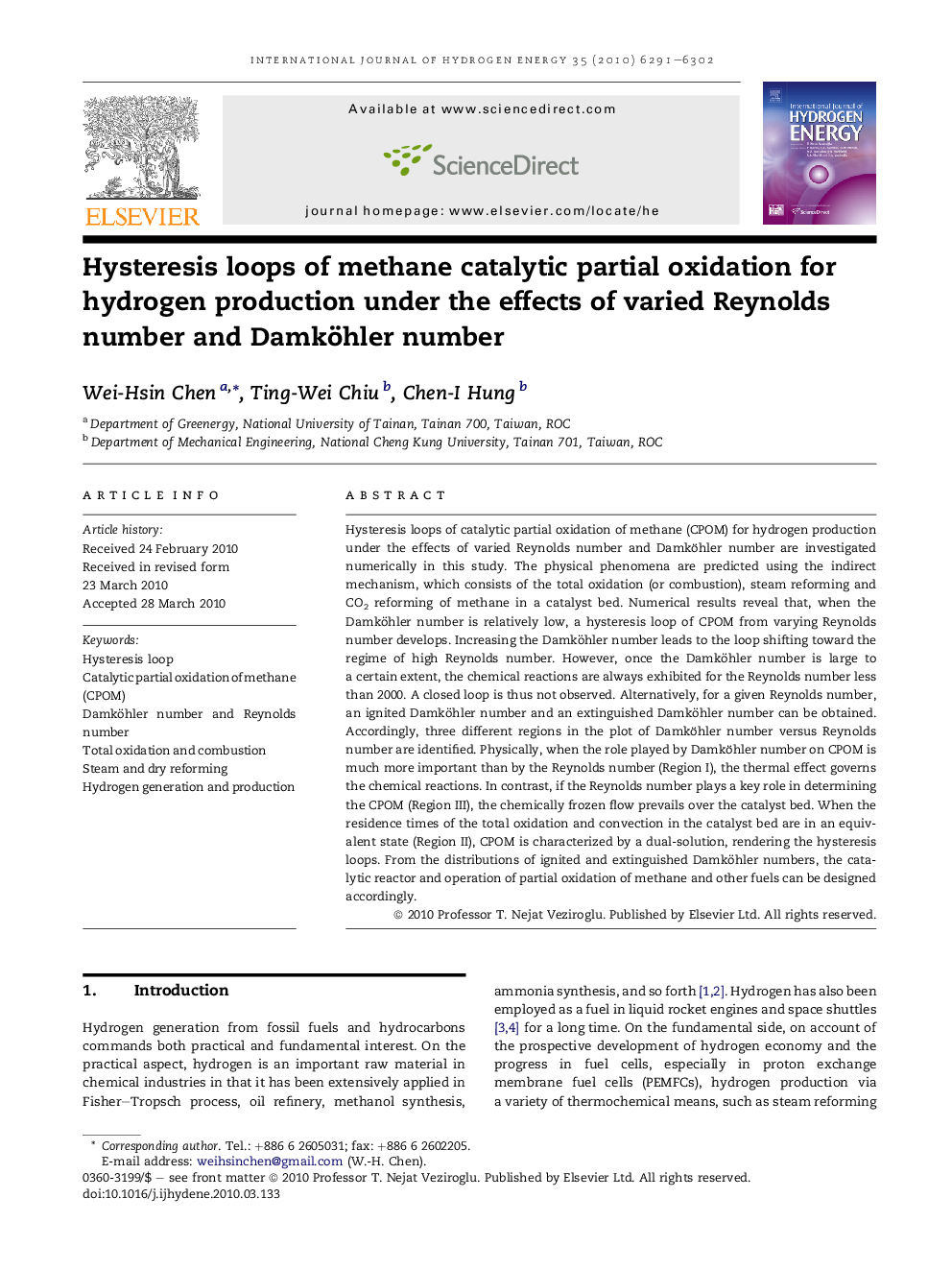| Article ID | Journal | Published Year | Pages | File Type |
|---|---|---|---|---|
| 1277090 | International Journal of Hydrogen Energy | 2010 | 12 Pages |
Hysteresis loops of catalytic partial oxidation of methane (CPOM) for hydrogen production under the effects of varied Reynolds number and Damköhler number are investigated numerically in this study. The physical phenomena are predicted using the indirect mechanism, which consists of the total oxidation (or combustion), steam reforming and CO2 reforming of methane in a catalyst bed. Numerical results reveal that, when the Damköhler number is relatively low, a hysteresis loop of CPOM from varying Reynolds number develops. Increasing the Damköhler number leads to the loop shifting toward the regime of high Reynolds number. However, once the Damköhler number is large to a certain extent, the chemical reactions are always exhibited for the Reynolds number less than 2000. A closed loop is thus not observed. Alternatively, for a given Reynolds number, an ignited Damköhler number and an extinguished Damköhler number can be obtained. Accordingly, three different regions in the plot of Damköhler number versus Reynolds number are identified. Physically, when the role played by Damköhler number on CPOM is much more important than by the Reynolds number (Region I), the thermal effect governs the chemical reactions. In contrast, if the Reynolds number plays a key role in determining the CPOM (Region III), the chemically frozen flow prevails over the catalyst bed. When the residence times of the total oxidation and convection in the catalyst bed are in an equivalent state (Region II), CPOM is characterized by a dual-solution, rendering the hysteresis loops. From the distributions of ignited and extinguished Damköhler numbers, the catalytic reactor and operation of partial oxidation of methane and other fuels can be designed accordingly.
